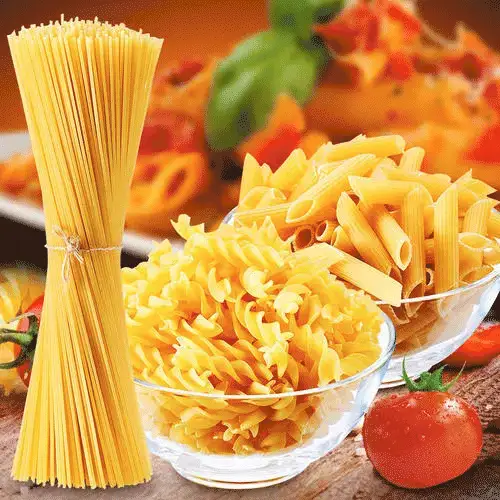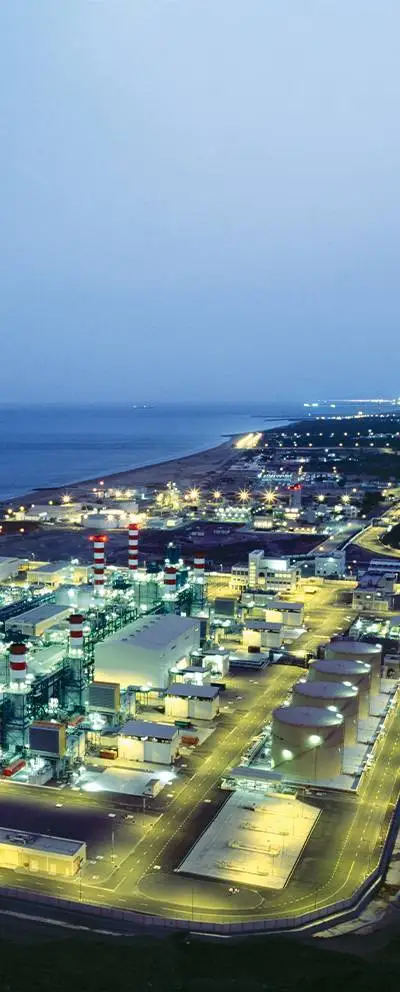Notícias
How Is Macaroni Crafted?
Macaroni, a staple of Italian cuisine and a beloved pasta type worldwide, holds a special place in the hearts of many. This simple, versatile pasta has become synonymous with comfort, appearing in dishes from classic mac and cheese to sophisticated pasta salads. The key to its widespread popularity and the consistency of its quality lies in the Macaroni Production Line, an engineered marvel that combines tradition with technology.
The Macaroni Production Line represents a significant leap in modern food manufacturing, transforming basic ingredients into the pasta we know and love at a scale and speed that were unimaginable just a few decades ago. This line is not just about mass production; it's a testament to how culinary traditions can evolve with technology, ensuring that a dish as simple as macaroni continues to be a part of our culinary landscape.
Experts in the field, like renowned pasta maker Giovanni Ferrara, underscore the revolution brought about by these production lines. Ferrara notes, "The Macaroni Production Line has not only made pasta accessible to a global audience but has also ensured that the quality of macaroni remains consistent, preserving its texture, taste, and nutritional value." This intersection of tradition and innovation is at the heart of what makes macaroni not just a food item, but a cultural artifact that continues to adapt and thrive in the modern world.

The Basics of Macaroni Production
At its core, macaroni production begins with a simple yet precise formula. The traditional definition of macaroni encompasses a variety of dry pasta shaped into narrow tubes, made primarily from durum wheat semolina. This definition, while straightforward, belies the depth of history and culture intertwined with macaroni's origins, tracing back to Italy's storied past. As noted by culinary historian Elisabetta Moro, "Macaroni is not just a food; it's a piece of Italy's soul, reflecting centuries of culinary evolution and innovation."
The key ingredients in macaroni manufacturing are remarkably few, underscoring the simplicity and purity of the pasta. Durum wheat semolina stands out for its high protein content and gluten strength, which gives macaroni its distinctive chew and ability to hold shape. Water, the other primary ingredient, activates the gluten matrix in the semolina, forming a dough that can be shaped and dried. Some modern variations might include additional ingredients for nutritional enhancement or to alter the pasta's color or flavor, such as spinach or tomato powder, but the essence of macaroni remains grounded in these basic components.
The Macaroni Production Line leverages these simple ingredients, transforming them through a series of precise mechanical processes. The significance of this production line in the modern food manufacturing landscape cannot be overstated. It epitomizes how technological advancements have democratized access to foods that once required labor-intensive processes, making macaroni a global staple. This evolution, while rooted in tradition, reflects a broader trend towards efficiency and sustainability in food production, ensuring that macaroni continues to be a beloved dish for generations to come.
The Role of the Macaroni Production Line
The Macaroni Production Line plays a pivotal role in the transformation of simple ingredients into the beloved pasta shape known worldwide. This complex assembly of machinery and technology represents the heart of modern macaroni manufacturing, merging age-old traditions with contemporary engineering excellence.
Overview of the Production Line Setup
A typical macaroni production line encompasses several key stages, starting with the mixing of durum wheat semolina and water to create the dough. This mixture then travels through various machines designed for extrusion, cutting, drying, and finally packaging. Each section of the line is meticulously calibrated to ensure the pasta's shape, texture, and taste meet stringent quality standards.
The Automation Process and Its Efficiency Enhancements
Automation is the linchpin of the Macaroni Production Line, enabling unparalleled efficiency and consistency. Machines precisely control the amount of moisture in the dough, the extrusion pressure, and the drying temperature and time, factors that are crucial to the final product's quality. "Automation in pasta production not only scales up output but also enhances the precision with which each piece of macaroni is crafted," explains Marco Bianchi, a food production engineer specializing in pasta manufacturing. This automated control ensures that the macaroni not only tastes good and maintains its texture but also adheres to nutritional standards.
The integration of automation within the production line has significantly enhanced efficiency, reducing waste and energy consumption. By optimizing every step of the process, manufacturers can produce vast quantities of macaroni more rapidly than ever before, without compromising on quality. This efficiency is essential in meeting the global demand for pasta, showcasing how traditional food can thrive in the modern era through technological innovation.
The Macaroni Production Line stands as a testament to the food industry's ability to adapt and grow, ensuring that even the simplest of foods can be produced sustainably and efficiently on a global scale. Through this harmonious blend of tradition and technology, macaroni continues to be a staple food, beloved by many across the world.
Step-by-Step Process of Macaroni Crafting
The crafting of macaroni on a Macaroni Production Line is a meticulously orchestrated process that ensures each piece of pasta meets the highest standards of quality. This step-by-step journey from raw ingredients to finished product is both an art and a science, involving the following critical stages:
Mixing and Kneading
The process begins with the mixing of durum wheat semolina and water, the fundamental ingredients of macaroni. This mixing occurs in large, industrial mixers that ensure the dough achieves the perfect consistency. "The key to superior pasta lies in the quality of the dough," states Francesca Romana, a master pasta maker. This stage is crucial for developing the gluten structure that will give the macaroni its texture and elasticity.
Extrusion
Once the dough reaches the desired consistency, it moves to the extrusion stage. Here, the dough is forced through dies made of bronze or Teflon, depending on the desired surface texture of the pasta. The shape of the die determines the pasta's shape; in the case of macaroni, a tubular die is used. The extrusion process is critical for shaping the macaroni, and the choice of die material can influence the pasta's final texture, with bronze dies producing a rougher surface that better absorbs sauces.
Drying
After extrusion, the macaroni enters the drying phase, which is essential for stabilizing the pasta and extending its shelf life. Drying must be carefully controlled to prevent the pasta from cracking or becoming too brittle. "The drying stage is where the science of pasta making truly comes into play," notes food scientist Angela Rossi. The duration and temperature of drying are adjusted based on humidity, pasta thickness, and other variables to ensure optimal texture and taste.
Cutting and Packaging
The final stages involve cutting the macaroni to the desired length and then packaging it for distribution. Modern production lines use advanced machinery for cutting with precision and packaging efficiently, ensuring that the pasta is protected from moisture and other environmental factors that could compromise its quality.
Throughout the Macaroni Production Line, quality control measures are in place to ensure that each piece of macaroni not only looks and tastes as it should but also adheres to health and safety standards. This detailed process showcases the blend of traditional pasta-making techniques with modern manufacturing efficiencies, resulting in the high-quality macaroni enjoyed by consumers around the globe.
Innovations in Macaroni Production
The Macaroni Production Line has seen significant advancements in technology and methodology, pushing the boundaries of pasta making into new realms of efficiency, sustainability, and quality. These innovations are pivotal in meeting the growing global demand for macaroni, ensuring that production is not only faster and more cost-effective but also environmentally friendly.
Recent Technological Advancements in the Production Line
One of the most noteworthy innovations is the introduction of precision engineering in the extrusion and drying processes. Advanced sensors and control systems now allow for real-time adjustments, ensuring that the pasta maintains its quality throughout the production cycle. Moreover, the adoption of renewable energy sources and water recycling systems in pasta factories marks a significant step towards sustainable manufacturing practices. "Incorporating green technology in the Macaroni Production Line has drastically reduced our carbon footprint without compromising on productivity," highlights Luca Martini, CEO of a leading pasta manufacturing company.
Improvements in Product Quality and Sustainability
The integration of these innovative technologies has had a profound impact on the quality of macaroni produced. Enhanced drying techniques, for instance, have improved the texture and shelf-life of the pasta, making it more appealing to consumers. Additionally, the use of sustainable and locally sourced ingredients has become more prevalent, responding to consumer demand for ethically produced goods. These advancements not only elevate the final product but also reflect a broader industry shift towards sustainability and ethical production practices.
These innovations in the Macaroni Production Line represent the fusion of tradition with modern technology, ensuring that macaroni remains a beloved dish worldwide. By embracing these changes, the pasta industry is set to continue its legacy of delivering high-quality, sustainable food products to consumers around the globe.

Conclusion
The journey of macaroni from simple ingredients to a beloved staple on dinner tables around the world is a fascinating story of culinary evolution and technological innovation. The Macaroni Production Line stands at the heart of this story, embodying the remarkable blend of tradition and modernity that defines the pasta industry today.
Through each step of the production process, from the precise mixing and kneading of dough to the advanced drying and packaging techniques, the Macaroni Production Line ensures that this humble pasta maintains its place as a versatile and cherished food. The integration of cutting-edge technologies and sustainable practices within these production lines not only enhances the efficiency and quality of macaroni but also reflects a commitment to ethical and environmentally responsible manufacturing.
As we've explored the intricacies of macaroni crafting, it's clear that the pasta we enjoy is the result of meticulous processes and innovations that extend far beyond the kitchen. The dedication of pasta makers to preserving the texture, taste, and nutritional value of macaroni, while also adapting to modern demands for sustainability and efficiency, ensures that macaroni will continue to be a global favorite for generations to come.
Understanding the Macaroni Production Line and the efforts behind macaroni crafting enriches our appreciation for this staple food. It's a reminder of the complex journey that food undergoes before it reaches our plates, highlighting the importance of sustaining culinary traditions while embracing the advancements that allow them to thrive in today's world.












